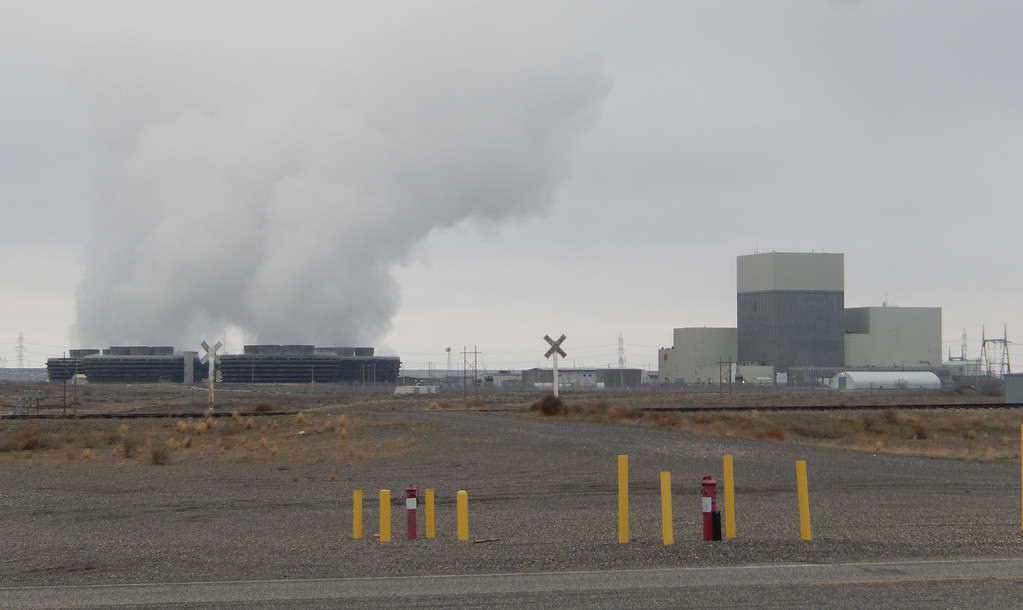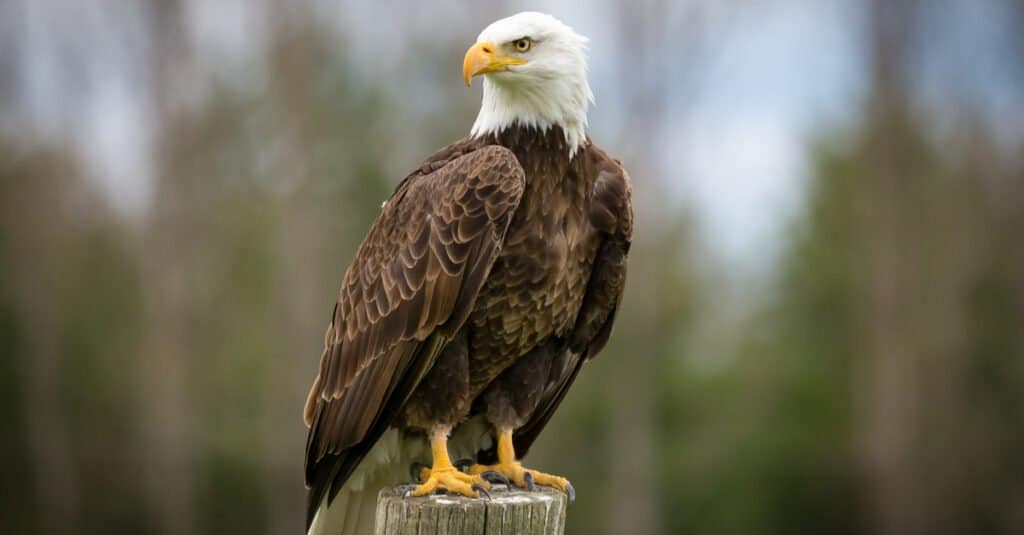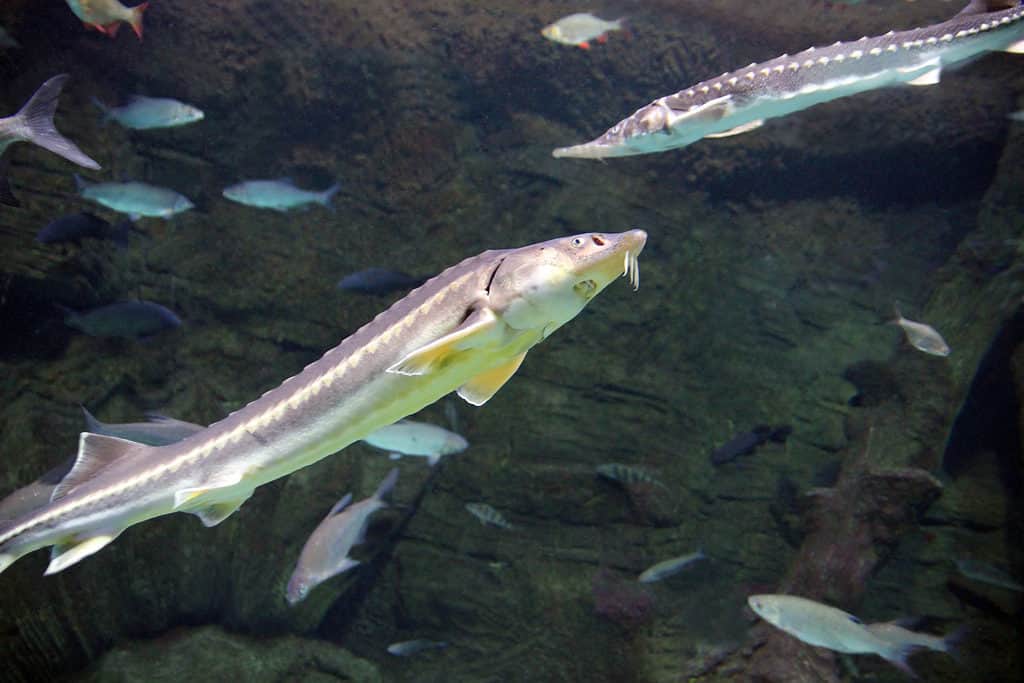Nuclear power plants are a crucial energy source for many countries around the world. Nuclear power plants offer many benefits, but they pose a significant risk to the environment and human health. As such, understanding their impact on the surrounding ecosystem and the local communities that live near it is important.
In this article, we discover the largest nuclear power plant in Washington State. We provide an overview of the history of the plant, its generation capacity, and the impacts on the human population, wildlife, and flora around the plant.
The Largest Nuclear Power Plant in Washington State

In Washington State, the largest nuclear power plant is Columbia Generating Station.
©Chris Uhlik/Wikimedia Commons – License
In Richland’s rural town, Columbia Generating Station is Washington State’s largest nuclear power plant.
The plant has operated since 1984 and provides a significant source of energy to the region, powering over a million homes and businesses.
But the plant also has impacts on the surrounding environment, including:
- The human population
- Wildlife
- Flora
Understanding these impacts and the measures being taken to mitigate them is important.
Overview of the Nuclear Power Plant
The station is a pressurized water reactor (PWR) nuclear power plant. Energy Northwest, a nonprofit joint operating agency, owns and operates the plant.
Generation Capacity
The Columbia Generating Station has a net generating capacity of 1,207 megawatts, making it the largest power plant in Washington.
This is enough to power over one million homes. In addition, the plant’s capacity factor, which measures the percentage of its maximum capacity actually used, is consistently above the national average for nuclear power plants in the US.
How the Plant Generates Electricity
The Columbia Generating Station generates electricity through a process called nuclear fission.
The reactor uses uranium-235 fuel rods to produce heat through a chain reaction. The heat is then transferred to water, creating steam that drives a turbine, generating electricity.
The steam is then cooled and condensed back into the water and reused.
Key Components of the Plant
The main components of the Columbia Generating Station include:
- The reactor
- Steam generators
- Turbine
- Cooling system
The reactor is the plant’s core, where nuclear fission occurs. The steam generators transfer heat from the reactor to the water to produce steam.
The turbine converts the steam engine’s kinetic energy into mechanical energy. The energy is then converted into electrical energy.
The cooling system, which uses water from the Columbia River, helps regulate the plant’s temperature and prevent overheating.
Safety Measures and Regulations
The Columbia Generating Station is subject to strict safety regulations and oversight from the Nuclear Regulatory Commission (NRC).
The plant has multiple safety systems to prevent accidents and mitigate their consequences. These include:
- Systems to shut down the reactor in an emergency
- Containment structures to prevent the release of radioactive materials
- Emergency response plans
History of the Plant
This station is Pacific Northwest’s only commercial nuclear power plant.
Since the plant started operations in 1984, it has been a vital energy source for millions across the region.
But the history of the plant has not been without its challenges and controversies.
Planning and Construction
The planning and construction of the Columbia Generating Station started in the late 1960s as a response to the growing energy needs of the Pacific Northwest region.
The original plan was to build five nuclear reactors, but only one was constructed due to rising costs and concerns over nuclear safety.
The plant’s pressurized water reactor is a nuclear reactor type that uses water to transfer heat from the nuclear fuel to a steam generator, producing steam to drive a turbine and generate electricity.
Purpose of the Plant
The Columbia Generating Station was designed to provide a reliable energy source to the region, reducing its reliance on non-renewable energy sources such as fossil fuels.
The plant generates about 10% of the electricity used in Washington. Its electricity output is enough to power more than a million homes.
Upgrades and Improvements
Over the years, the Columbia Generating Station has undergone several upgrades and improvements to enhance its safety and efficiency.
For instance, in 2005, the plant underwent a major refurbishment, which included replacing some of its key components, such as the steam generators, to extend its life.
Challenges Faced by the Plant
Like all nuclear power plants, the Columbia Generating Station has faced its fair share of challenges and controversies.
For example, in 2011, the plant was shut down for several months due to a problem with its main transformer, causing a loss of power to the grid. The incident raised concerns about the plant’s reliability and safety and prompted a review of the plant’s operations and maintenance procedures.
Despite these challenges, the Columbia Generating Station remains an important energy source for the Pacific Northwest region. Moreover, its history provides important insights into the benefits and risks associated with nuclear power.
Human Population Around the Plant

The Hanford Site is a decommissioned nuclear production complex that was a major center of the nuclear weapons program in the United States. Now, it is the location of the Columbia Generating Station.
©TobinFricke/Wikimedia Commons – License
The Columbia Generating Station is located in a sparsely populated area of southeastern Washington.
The plant is situated on the Hanford Site, a decommissioned nuclear production complex that was once a major center of the U.S. nuclear weapons program.
As a result, the population density near the plant is relatively low.
Population Distribution
Richland is the closest town to the plant, with a population of around 57,000.
Other nearby towns include Kennewick, Pasco, and West Richland, which have populations of around 82,000, 78,000, and 15,000, respectively.
The majority of the population within a 50-mile radius of the plant is concentrated in the Tri-Cities area, with a total population of around 300,000.
Public Perception and Attitudes
The public perception of the Columbia Generating Station is generally positive in the Tri-Cities area.
The plant is seen as an important source of jobs and economic activity, and there is a general sense of pride in the plant’s role as a clean energy source.
There have been some concerns about safety and the potential for accidents. But these concerns are generally outweighed by the perceived benefits of the plant.
Emergency Preparedness
The Columbia Generating Station has an emergency preparedness program to protect the public in case of an accident. This includes:
- Regular training for emergency responders
- Public education campaigns
- Emergency response drills
The plant also has an Emergency Operations Center that can be activated in an emergency to coordinate response efforts and communicate with the public.
Regulatory Oversight
As mentioned, the Columbia Generating Station is subject to strict regulatory oversight from NRC and other state and federal agencies.
The NRC conducts regular inspections of the plant to ensure compliance with safety regulations and license conditions. The plant must also submit regular reports on safety and operational issues to the NRC and other regulatory bodies.
Wildlife Around the Plant
The Columbia Generating Station is located in an area that is home to a diverse range of wildlife, including:
- Mammals
- Birds
- Fish
The plant’s operations have the potential to impact these species, and as a result, there are measures to minimize the plant’s impact on the local ecosystem.
Mammals

Coyotes are one of several mammals that live near Columbia Generating Station.
©Mircea Costina/Shutterstock.com
The area surrounding the plant is home to various mammals, including:
The plant has taken steps to minimize the impact of its operations on these animals, including installing wildlife-friendly fencing and using noise-reducing technologies.
Birds

Bald eagles nest at the Hanford Reach National Monument, near Columbia Generating Station.
©iStock.com/emranashraf
The Hanford Reach National Monument, located adjacent to the plant, is an important nesting area for migratory birds, including bald eagles and several species of waterfowl.
The plant works closely with state and federal wildlife agencies to monitor and protect these species.
In addition, the plant has implemented measures to prevent birds from colliding with the plant’s structures, including installing bird deterrent devices.
Fish

The Columbia River, running adjacent to Columbia Generating Station, is home to several species of fish, including sturgeons.
©iStock.com/OlgaRakhm
The Columbia River, which runs adjacent to the plant, is home to several fish species, including:
The plant’s operations have the potential to impact these fish, particularly through the discharge of heated water into the river.
As a result, the plant works closely with state and federal agencies to monitor and mitigate the impact of its operations on fish populations.
Environmental Monitoring
The plant conducts regular environmental monitoring to assess the impact of its operations on the local ecosystem.
This includes monitoring of air and water quality, as well as surveys of local wildlife populations. The data collected from these monitoring programs is used to inform the plant’s environmental management practices and identify areas where further action may be needed to minimize the plant’s impact on the environment.
Plant Species Around the Plant
The Columbia Generating Station is located in an area of rich biodiversity, with various native plant species and vegetation types found in the surrounding landscape.
The flora around the plant is an important aspect of the local ecosystem, providing habitat and food for diverse wildlife.
Native Plant Species and Vegetation Types

Douglas fir trees grow near the plant.
©IrinaK/Shutterstock.com
The vegetation around the plant consists of a mix of forest, grassland, and wetland ecosystems, each with a unique set of plant species.
Forested areas are dominated by species such as:
- Douglas fir
- Western hemlock
- Red cedar
Grasslands are home to native grasses and wildflowers.
Wetland areas, important habitats for waterfowl and other wildlife, are characterized by cattails, bulrushes, and other wetland plant species.
Water Use and Conservation Measures
The Columbia Generating Station uses large amounts of water for cooling and other processes. This can impact local water resources and the flora that depends on them.
To minimize these impacts, the plant has implemented a variety of water use and conservation measures, including:
- Using recycled water for some processes
- Minimizing water use during times of drought
Impact of Heated Water Discharge on Local Flora
The heated water discharged from the plant can also impact local flora, particularly in areas where the water enters streams or other waterways.
But studies have shown that the impact is generally limited to small areas immediately adjacent to the discharge point and that the overall impact on the surrounding flora is minimal.
Environmental Monitoring and Conservation Efforts
To ensure that the flora around the plant is protected and conserved, the plant conducts regular environmental monitoring and assessment activities.
These include:
- Surveys of plant species and populations
- Monitoring of water quality and other environmental factors
The plant also collaborates with local conservation organizations and government agencies to develop and implement conservation and restoration projects in the surrounding area.
Where is Columbia Generating Station Located on a Map?
Situated on the Hanford Site, approximately 10 miles north of Richland, Washington, the Columbia Generating Station is a nuclear power plant dedicated to commercial energy production. It is owned and operated by Energy Northwest, a non-profit joint operating agency based in the state of Washington.
Here is Columbia Generating Station on a map:
Key Takeaways
Columbia Generating Station is Washington State’s largest nuclear power plant. It provides a significant energy source to the region. But the plant also impacts the surrounding environment, including the human population, wildlife, and flora.
Despite these impacts, the plant has implemented various measures to minimize its environmental footprint, including conservation measures, environmental monitoring, and collaboration with local conservation organizations and government agencies.
Overall, the flora, fauna, and human populations around the plant are important to the local ecosystem. Therefore, storing and mitigating the plant’s impacts is crucial to ensure the surrounding environment is protected and conserved for future generations.
The photo featured at the top of this post is © Chris Uhlik/Wikimedia Commons – License / Original
Thank you for reading! Have some feedback for us? Contact the AZ Animals editorial team.






